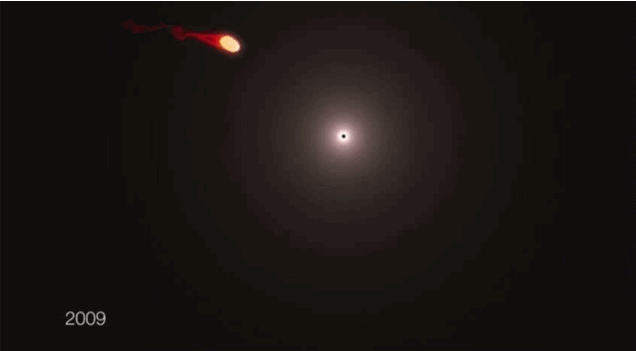A few months ago I talked about Astronomers seeing the gas cloud known as G2 passing the central black hole of the Milky Way, called Sagittarius A*, and how we had hoped to watch the black hole destroy it in order to learn about the behaviour of supermassive black holes. As we all sat and watched the passage of the cloud over the course of a few months, we were surprised to find that the cloud remained intact and passed straight by Sag A*. When we last checked in, the leading theory was that the ‘cloud’ actually was a dense super-star, so massive that it has an extended dusty envelope. Let’s see what has happened since then.

It was expected that the cloud would be elongated by the incredible gravitational tidal forces of the black hole, splitting it into a long stream, some of which would fall into the black hole. This was a promising scenario for astronomers viewing from Earth because we would see a black hole actually swallow up material. By looking at how this process occurred we would have been able to learn about the mechanisms involved in black hole accretion, and see how it would affect the black hole in the process.

Instead, the cloud was barely even altered as it swung around the central mass, showing only slight changes in shape. And it was moving fast, 10 Million Km/h! The only explanation is that the ‘cloud’ is actually an extended object with a dense core, like an incredibly massive star. It’s the only way it could keep itself together.
The other piece of evidence is that there is no new activity from the black hole. If black holes are suddenly swallowing up more material they tend to flare up and brighten throughout their accretion disk, as the collision of matter at high speeds produces bright radiation. Whatever the accretion disk was doing before G2 passed by, it’s still doing it.
Its important to note that observations of this region are incredibly difficult. The central region of our Milky Way is shrouded by thick layers of dust and gas, and so more observations are necessary to get good data and determine what is really happening. As the cloud moves further away from the black hole we can get a better idea if the massive tidal forces had any impact on G2.
